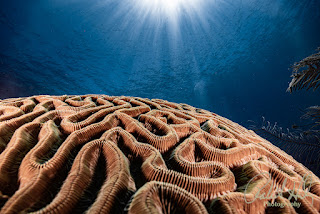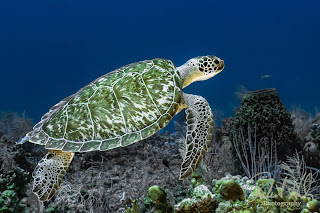Organizing Your Underwater Photo Library with Adobe Lightroom: Tips for Efficiency and Creativity
Learn how to manage and organize your photos using Adobe
Lightroom
Introduction: As an underwater photography
enthusiast, you've amassed a vast collection of breathtaking underwater images.
However, managing and organizing these photos can be a daunting task. Fear not!
In this blog post, we'll dive into the world of organizing your underwater
photo library using Adobe Lightroom. With our expert tips and strategies,
you'll not only achieve efficient organization but also unlock new creative
possibilities for your underwater photography journey.
- Understanding
the Power of Metadata: Metadata is a game-changer when it comes to
organizing your underwater photo library. Learn how to leverage Adobe
Lightroom's metadata features to add valuable information such as
location, dive site, camera settings, and more. This will enable you to
easily search, sort, and filter your photos based on specific criteria,
making it a breeze to find that perfect shot from your last dive.
- Smart
Tagging and Keywording Techniques: Discover the art of smart tagging
and keywording to take your organization to the next level. We'll guide
you through the process of creating a comprehensive set of keywords
specific to underwater photography. By assigning relevant keywords to your
photos, you can quickly locate specific subjects, marine species, or even
dive conditions, allowing for efficient retrieval and categorization of
your underwater images.
- Creating
Collections and Smart Collections: Collections and Smart Collections
in Adobe Lightroom are powerful tools for organizing and grouping your
photos. We'll show you how to create collections based on themes, dive
trips, or specific projects, allowing you to visually organize your images
for easier navigation. Moreover, we'll explore the concept of Smart
Collections, which automatically gather photos based on predefined criteria,
saving you time and effort in a manual organization.
- Rating
and Flagging for Selecting the Best: Not every photo you capture
underwater will be a masterpiece, and that's perfectly fine. Learn how to
use rating and flagging systems in Adobe Lightroom to identify and
highlight your best shots. By assigning ratings or flags to your photos,
you can quickly filter and focus on the images that deserve further
attention and post-processing, ensuring you spend your time enhancing the
gems in your collection.
- Utilizing
Collections and Keywords for Workflow Efficiency: Efficiency is key in
underwater photography, both in capturing images and organizing them.
We'll share practical tips on how to create streamlined workflows using
collections and keywords. Discover how to use keywords during the import
process to automatically organize your photos into relevant collections,
ensuring your underwater images are organized from the moment they enter
your library.
- Syncing
and Backing up Your Underwater Photo Library: Keeping your underwater
photo library safe and accessible is crucial. Learn how to utilize Adobe
Lightroom's syncing and backup features to ensure your valuable underwater
images are protected. We'll guide you through the process of syncing your
library across devices, allowing you to access and manage your photos on
the go. Additionally, we'll discuss best practices for backing up your
library to prevent any potential loss of your underwater treasures.
Conclusion:
With a solid understanding of metadata, you can attach
valuable information to each photo, such as the dive location, date, and camera
settings. This allows you to relive your underwater experiences and helps you
reminisce about the incredible moments captured in each image. Imagine
effortlessly searching for photos from a specific dive site or filtering by a
particular marine species – with metadata, it becomes a reality.
Smart tagging and keywording take your organization to the
next level. By creating a comprehensive set of keywords specific to underwater
photography, you can easily tag your photos with relevant terms like
"coral reef," "shoal of fish," or "macro
photography." This enables you to quickly retrieve photos based on
specific subjects, making it a breeze to curate collections or find images for
specific projects or publications.
Collections and Smart Collections are powerful tools that
give you the flexibility to visually organize your underwater images. Creating
collections based on themes, dive trips, or even specific projects allows you
to curate and showcase your work with ease. Smart Collections automatically
gather photos based on predefined criteria, making it effortless to gather all
your best shots or photos taken at a particular dive location. These
organizational features bring a new level of efficiency to your workflow,
saving you time and enabling you to focus on the creative aspect of your
underwater photography.
Rating and flagging systems help you identify the cream of
the crop among your underwater photos. As you review your images, assign
ratings or flags to highlight the shots that stand out. This process enables
you to filter and focus on the images that deserve further attention and
post-processing, ensuring you spend your valuable time enhancing the gems in
your collection.
Efficiency is paramount in underwater photography, both in
capturing images and organizing them. By utilizing collections, keywords, and
well-defined workflows, you can streamline your photo management process from
import to final export. Learn how to leverage keywords during the import
process to automatically organize your photos into relevant collections. This
ensures that your underwater images are organized from the moment they enter
your library, freeing up more time for creative exploration.
Lastly, remember to sync and back up your underwater photo
library to keep your precious memories safe and accessible. Adobe Lightroom's
syncing and backup features allow you to access and manage your photos across
devices, whether you're on a dive expedition or sharing your work with family
and friends. Backing up your library ensures that your underwater treasures
remain protected, even in the face of potential technical issues or accidents.
So, dive in and embrace the power of organizing your
underwater photo library with Adobe Lightroom. Unleash your creativity, knowing
that your images are well-organized, easily accessible, and ready to be shared
with the world. Stay tuned for future blogs where we'll explore the exciting
world of photo processing using Adobe Lightroom, helping you transform your
underwater images into mesmerizing works of art.
The above might seem intimidating and complex. Allow me to
show you have to simplify this important process in my upcoming online training
course which I will be announcing soon. If you have an interest in learning
more, send me your email and let me know (bob@robertherb.com).
Happy organizing and happy diving!
| ||||||||||||||||||||




Comments
Post a Comment
Please let me know your comments.